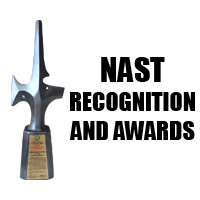The National Academy of Science and Technology, Philippines (NAST PHL), through its Engineering Sciences and Technology Division (ESTD) and in partnership with USAID-STRIDE, conducted a Roundtable Discussion (RTD) on the Prospects of Microalgae in the Philippines at Hotel Jen Manila on September 22, 2015.
The RTD focused on the potential of microalgae to become an alternative source of energy or biofuel and for other industrial applications such as aquaculture feeds, algae-derived plastics, fertilizers, cosmetics, nutritional supplements, and pharmaceuticals, among others.
Dr. Joel L. Cuello, an expert on sustainable biological and agricultural systems engineering from the University of Arizona and a De La Salle University (DLSU) USAID-STRIDE visiting professor, explained the connection of the falling of oil price and the future of microalgae as biofuel feedstock. According to him, the price of biofuel from microalgae, which is $24 per gallon, cannot compete in the global market today. He suggested a path venture for future investors that is multi-product and multi-market business model for microalgae to become economically-feasible. Microalgae biochemical factory for various high-value chemicals remains largely untapped.
He further discussed that the main concern with microalgae’s mass production is the contamination of open raceways due to the uncontrolled environment. He enumerated different technological advancements on the use of bioreactors to help industries maximize revenue and cut cost in microalgae production.
Academician Alvin B. Culaba, member of NAST PHL and professor of mechanical engineering at DLSU, discussed the use of Life Cycle Assessment (LCA) based framework in microalgae studies. This helps researchers identify problems in using algae as a biofuel feedstock. As part of post-harvesting process, Acd. Culaba together with the DLSU Microalgae Research Team, identified dewatering or drying as a crucial part of converting algal biomass to biofuels since this constitutes about 20% to 30% of the total production. Several researches about drying technology and the molecular dynamics to extract water were carried out to address this problem.
Mr. Joebert D. Toledo of Feedmix Specialists Inc. highlighted the industry’s perspective on the use of microalgae in the Philippine aquaculture setting. He explained that microalgae is essential in the early larval stages of shrimps, mollusks, echinoderms, and fishes development as direct or indirect feeds. It can also be used as additives to formulated feeds and bioremediation of aquaculture wastes. He enumerated the specific qualifications and composition of a desired feeds to marine species.
Further, mass culture of algae in outdoor tanks is labor-intensive and prone to algal crashes than the indoor mass culture. To avoid this, Mr. Toledo suggested intensifying culture of microalgae in controlled conditions such as in bioreactors or greenhouse and use several harvesting and preserving techniques. He also explained the advantages of microalgae in formulated feeds in the aquaculture industry. In addition, some species of algae like C. vulgaris, N. oculata and T. chuii can be used in bioremediation to utilize high nitrogen and phosphorus from aquaculture wastes.
Dr. Aristotle T. Ubando, project leader of USAID-STRIDE Microalgae Project and associate professor of Mechanical Engineering at DLSU, synthesized the roundtable discussion while Academician Alvin T. Culaba served as moderator and focal person. (Prepared by Loven Felix S. Opiana)











